-
Thursday, 30 May and 6 June 2024 Retiro Park, Palacio de Velázquez
Link of Links. Sacred Codes
A Tour in Dialogue with the Work of James Lee Byars
— Conducted by Laura Mena and Claudia Rodríguez-Ponga
The set of beliefs called “magic” in Western history is a long way from being eradicated by science and remains present in today’s society. Yet the division of knowledge into enclosed areas and faith in the progress of modernity have hindered an analysis of the networks of flows in which we are immersed (magnetic, auratic, energy, quantum).
The artist Laura Mema and curator and teacher Claudia Rodríguez-Ponga put forward a tour through the James Lee Byars exhibition, which is centred on magical thought, characterised by its capacity to discern links between dissimilar objects and assume the world from the said articulation of flows.
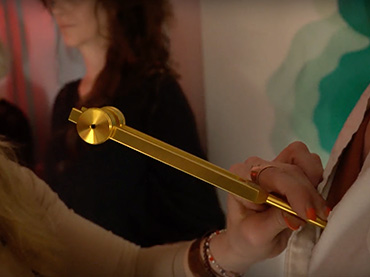
-
Friday, 14 June 2024 Sabatini Building, Floor 4
Zen Session Drawing from Tàpies
— Conducted by María Eugenia Manrique and Pedro Taiho Secorún
Artist and calligrapher María Eugenia Manrique and Zen master Pedro Taiho Secorún conduct a live Zen session and calligraphic activation in the rooms of the Antoni Tàpies exhibition.
Zen brings together the major concerns of the Catalan artist: an interest in Eastern, non-rationalist wisdom and the search for the void through elemental matter. The activity seeks to turn the Museo into a space of reflection and to offer an understanding of Tàpies’ painting as a path towards meditation, whereby the roundness and symbolism of matter lead towards an ethics and aesthetic of silence and dispossession.

-
Wednesday, 26 June 2024 Nouvel Building, Auditorium 200
Matter–Idea–Mandala
Lecture
Tickets— By Ignacio Gómez de Liaño
In this lecture, philosopher Ignacio Gómez de Liaño posits a Hermetic and spiritual reading of the Renaissance, a period traditionally considered to be the origin of the prevalence of science and logic over ancestral and mystical knowledge.
However, the Renaissance breathed new life into Platonic philosophy, with Marsilio Ficino’s translation in the fifteenth century of the works of Plotinus and those attributed to Hermes Trismegistus. In the sixteenth century, Giordano Bruno was the heir to this neo-Platonic-Hermetic renewal, radically shifting it upon conceiving of matter as an animate and intellectual being. And Bruno went further still: in his art of memory, he transformed the matter-idea into geometric structures in accordance with the tradition of diagrams used by Gnostics and Manichaeists from the second and third centuries CE, in addition to Buddhist mandalas.
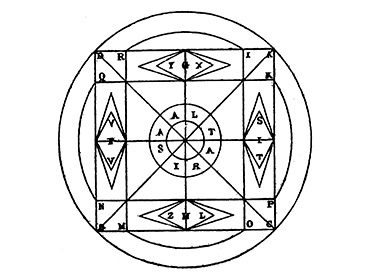
-
Saturday, 29 June 2024 Retiro Park, Palacio de Velázquez
Performance Day
Reactivations of the Performance Work of James Lee Byars and Miguel Benlloch
— With the collaboration of the Estate of James Lee Byars, courtesy of the Michael Werner Gallery, New York, London and Berlin, Pirelli HangarBicocca (Giovanna Amadasi and Marcella Vanzo), Rafa Romero de Ávila, the Miguel Benlloch Archive and Enrique Fuenteblanca.
Through his performances, the artist James Lee Byars synthesised many of his vital concerns, for instance the relationship between the ephemeral and the transcendental via the performative act, the use of different materials and the overlapping of spirituality in art without any obvious contradiction.
In this double session, some of the historical actions Byars carried out across his career are re-staged for the first time in Spain: Four in a Dress (1967), Breathe (Two in a Hat) (1968), Ten in a Hat (1968), Be Quiet (1980), Your Presence Is the Best Work / A Presence Is the Best Work (1992) and Five Points Make a Man (1994), among others. As a coda, an action will be held based on artist Miguel Benlloch’s text Acaeció en Granada (2013), on the construction, activation performance and destruction of The Golden Sphere, an abortive work Byars made in Granada as part of the Plus Ultra project, produced by BNV Producciones and curated by Mar Villaespesa inside the framework of the programme of activities for the Andalusia Pavilion at Expo '92.

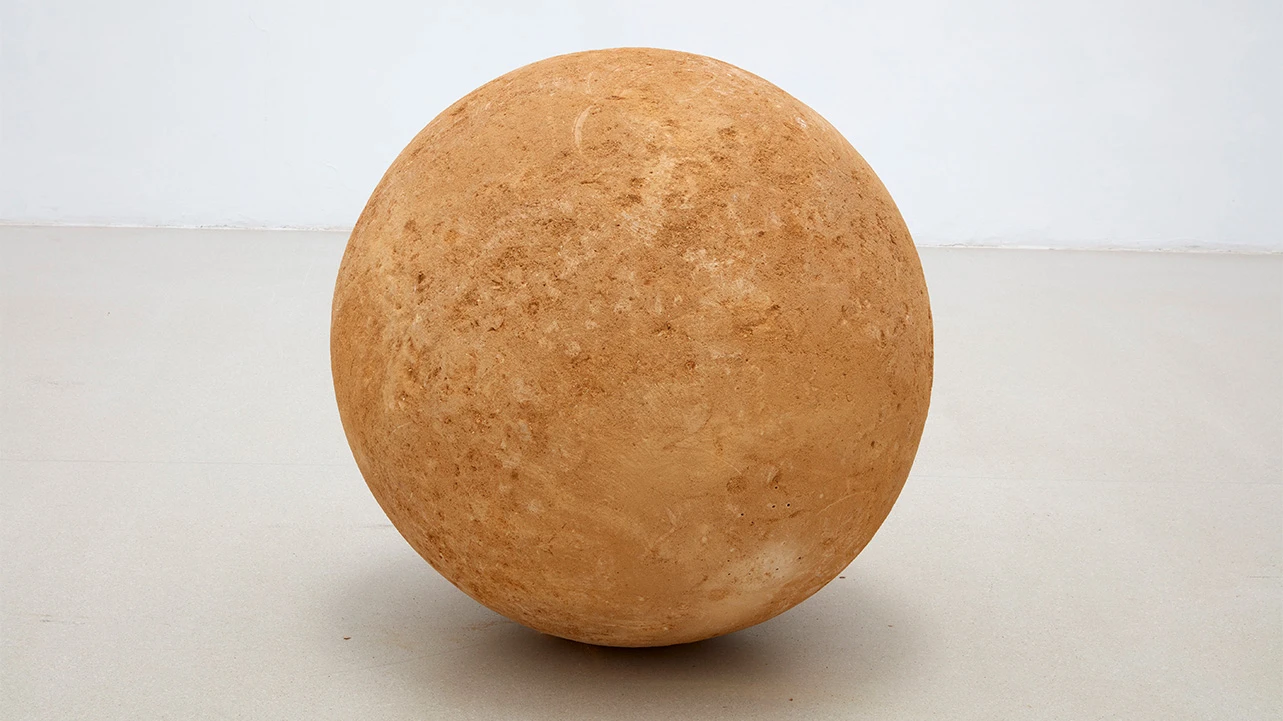
Held on 30 may 2024
This public programme explores, via lectures, drifts, encounters and performances throughout the month of June, one of the main strands in the Museo Reina Sofía’s temporary exhibition season: the return of materiality. The exhibitions Antoni Tàpies. The Practice of Art, James Lee Byars. Perfect Is the Question and Eva Lootz. Making as if Wondering: So What Is This? all share references to the affective, speculative and spiritual capacity of matter.
At a time of digital overload in every sphere of our lives, matter has become central to new thinking around the human and our changing relationship with the inanimate natural world. The contemporary fascination with the materic reveals the need to once again perceive from the physical and the tangible, the real and the sensorial, and, at the same time, it connects with a series of mystical and spiritual interpretations with which to confront the dualism between the living and inert world. Such examples are esoterism and alchemy, pivotal in James Lee Byars’ oeuvre; Eastern philosophy, a core part of Antoni Tàpies’ work; and the cosmogeny of Indigenous peoples, protagonists in the work of Eva Lootz. This same reflection is related to the present with “new materialisms”, a school of contemporary philosophy that champions an ontology based on this same expanded concept of matter.
The programme includes two performance tours through the James Lee Byars show, conducted by artists Laura Mema and curator Claudia Rodríguez-Ponga, specialists in the relationships between art, matter and spirituality; a Zen session in the galleries of the Antoni Tàpies exhibition, led by artist and calligrapher María Eugenia Manrique and Zen master Pedro Taiho Secorún; a lecture by artist and philosopher Ignacio Gómez de Liaño on Hermetism and spirituality in modern philosophy; and, finally, a day of reactivating the performances of James Lee Byars, culminating in an action based on the text Acaeció en Granada by Miguel Benlloch, who had a unique relationship with Byars.
Organised by
Museo Reina Sofía
Participants
Ignacio Gómez de Liaño is a writer, philosopher, translator, university lecturer and experimental poet. He was a founding member of the Cooperative of Artistic and Artisan Production, an epicentre of experimental poetry in Spain in the 1960s, and participated as the coordinator of the Seminar on the Automated Generation of Plastic Forms at the Computing Centre of Madrid, a pioneering international computer-generated art group. Notable among his broad number of publications are Los juegos del Sacromonte (Editora Nacional, 1975), La kabbala cristiana del Renacimiento (Taurus, 1979), Mundo, magia, memoria: selección de textos sobre Giordano Bruno (Taurus, 1987), El círculo de la sabiduría: diagramas del conocimiento en el mitraísmo, el gnosticismo, el cristianismo y el maniqueísmo (Siruela, 1998), El círculo de la sabiduría II: Los mandalas del budismo tántrico (Siruela, 1998) and Athanasius Kircher: itinerario del éxtasis o las imágenes de un saber universal (Siruela, 2001). He was the subject of the monographic show Ignacio Gómez de Liaño. Forsaking Writing held in the Museo Reina Sofía in 2019.
Laura Mema is an Argentinian artist and researcher who is based in Madrid. Her work relates different fields of nature and explores the link between living beings, translating energy and sound landscapes into matter. Moreover, she shifted her research over to the sphere of education with the project AMANCIA, in which she runs workshops on sacred and cymatic geometry at the School of Asiri Methodology in Ibiza. Since 2021, she has worked on editing the book Sonic Geometry at MACBA’s Research and Documentation Centre.
María Eugenia Manrique is an artist and calligrapher. With a degree in Fine Arts, she is a specialist in traditional painting and calligraphy in China, and trained at the Nihon Shuji Kyoiku Zaidan Foundation in Japan. Her calligraphic practice has been awarded with the Bronce Price from the Osaka International Triennale (Japan, 1990) and the Sumi-e Grand Award for Eastern Painting, from the Anshan Museum (China, 2014), among others. She is the author of different books on Eastern painting and calligraphy, such as Caligrafía zen. Método y arte del Sumi-e (Editorial Kairós, 2006) and Mano de mujer. Método y arte de la caligrafía japonesa (Editorial Kairós, 2024), and is a Zen practitioner at the Centro Zen Barcelona.
Claudia Rodríguez-Ponga is a contemporary art curator and lecturer at Nebrija University, IE University, Escuela SUR (Círculo de Bellas Artes) and the Autonomous University of Madrid (UAM). She explores the relationships between magical thought and contemporary art and has curated an array of exhibitions, including those devoted to Débora Bolsoni (Galeria Athena, Paris, 2017), Sara Ramo (Sala Alcalá 31, Madrid, 2019), Valeria Maculan (OTR Espacio de Arte, Madrid, 2023), Eva Lootz (Sala Alcalá 31, Madrid, 2024) and, with Alexis Callado, the show centred on Clara Carvajal (Centro Párraga de Murcia, 2024), to mention a few. She has also published essays in Revista Concreta, Revista de Occidente and Revista Re-visiones.
Pedro Taiho Secorún is a Zen master and the founder of Centro Zen Barcelona, a pioneering centre in Zen practice in Spain since 1979. A spiritual leader of Zen Bodaishin (the Spirit of Awakening), he has devoted his career to disseminating and teaching Zen Buddhism.
Más actividades

Aesthetics of Peace and Desertion Tactics
8 October 2025 – 24 June 2026
The study group Aesthetics of Peace and Tactics of Desertion: Prefiguring New Pacifisms and Forms of Transitional Justice proposes a rethinking—through both a theoretical-critical and historical-artistic lens—of the intricate network of concepts and practices operating under the notion of pacifism. A term not without contestation and critical tension, pacifism gathers under its name a multiplicity of practices—from anti-militarism and anti-war movements to non-violence activism—while simultaneously opening urgent debates around violence, justice, reparation, and desertion. Here, pacifism is not conceived as a moral doctrine, but as an active form of ethical and political resistance capable of generating aesthetic languages and new positions of social imagination.
Through collective study, the group seeks to update critical debates surrounding the use of violence and non-violence, as well as to explore the conflict of their representation at the core of visual cultures. In a present marked by rearmament, war, genocide, and the collapse of the social contract, this group aims to equip itself with tools to, on one hand, map genealogies and aesthetics of peace—within and beyond the Spanish context—and, on the other, analyze strategies of pacification that have served to neutralize the critical power of peace struggles. Transitional and anti-punitive justice proposals will also be addressed, alongside their intersections with artistic, visual, and cinematic practices. This includes examining historical examples of tribunals and paralegal activisms initiated by artists, and projects where gestures, imaginaries, and vocabularies tied to justice, reparation, memory, and mourning are developed.
It is also crucial to note that the study programme is grounded in ongoing reflection around tactics and concepts drawn, among others, from contemporary and radical Black thought—such as flight, exodus, abolitionism, desertion, and refusal. In other words, strategies and ideas that articulate ways of withdrawing from the mandates of institutions or violent paradigms that must be abandoned or dismantled. From feminist, internationalist, and decolonial perspectives, these concepts have nourished cultural coalitions and positions whose recovery today is urgent in order to prefigure a new pacifism: generative, transformative, and radical.
Aesthetics of Peace and Tactics of Desertion, developed and led by the Museo Reina Sofía’s Studies Management, unfolds through biweekly sessions from October to June. These sessions alternate between theoretical discussions, screenings, work with artworks and archival materials from the Museo’s Collection, reading workshops, and public sessions. The group is structured around sustained methodologies of study, close reading, and collective discussion of thinkers such as Judith Butler, Elsa Dorlin, Juan Albarrán, Rita Segato, Sven Lütticken, Ruth Wilson Gilmore, and Franco “Bifo” Berardi; historical episodes such as the anti-nuclear and anti-arms race movement in Spain; and the work of artists and activists including Rojava Film Commune, Manuel Correa and the Oficina de Investigación Documental (Office for Documentary Investigation), and Jonas Staal, among other initial cases that will expand as the group progresses.
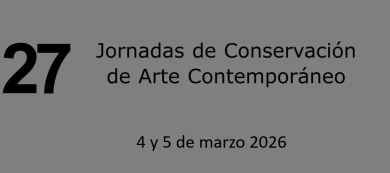
27th Contemporary Art Conservation Conference
Wednesday, 4, and Thursday, 5 March 2026
The 27th Contemporary Art Conservation Conference, organised by the Museo Reina Sofía’s Department of Conservation and Restoration, with the sponsorship of the MAPFRE Foundation, is held on 4 and 5 March 2026. This international encounter sets out to share and debate experience and research, open new channels of study and reflect on conservation and the professional practice of restorers.
This edition will be held with in-person and online attendance formats, occurring simultaneously, via twenty-minute interventions followed by a five-minute Q&A.
Submitting Proposals
The deadline for presenting proposals ends on 28 September 2025. Those interested must send an email to jornada.conservacion@museoreinasofia.es, submitting the following documents:
- An unpublished proposal related to the conservation or restoration of contemporary art.
- A 1,700-word summary, written in Word, on the theme addressed. Please indicate the topic at the top of the document with five keywords and the presentation format (in-person or virtual). Preference will be given to the in-person format.
- CV and contact details.
- Only one proposal per person will be accepted.
- Proposals related to talks given in the last three conferences will not be accepted.
Proposals may be submitted in Spanish, French or English and will be evaluated by a Scientific Committee, which will select the submissions to be presented during these conference days and will determine their possible participation in a subsequent publication, the inclusion of which will undergo a second and definitive evaluation by the Editorial Committee.
For submissions in a virtual format, participants must send a recording following certain technical requirements they will receive once participation is confirmed.
The programme of sessions will be published in the coming days.
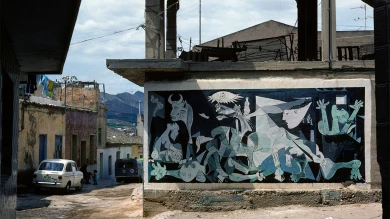
Rethinking Guernica
Monday and Sunday - Check times
This guided tour activates the microsite Rethinking Guernica, a research project developed by the Museo Reina Sofía’s Collections Area, Conservation and Restoration Department and the Digital Projects Area of the Editorial Activities Department, assembling around 2,000 documents, interviews and counter-archives related to Pablo Picasso’s painting Guernica (1937).
The visit sets out an in-situ dialogue between the works hung around the painting and a selection of key documents, selected by the Museo’s Education Team and essential to gaining an idea of the picture’s historical background. Therefore, the tour looks to contribute to activating critical thought around this iconic and perpetually represented work and seeks to foster an approach which refreshes our gaze before the painting, thereby establishing a link with the present. Essentially revisiting to rethink Guernica.
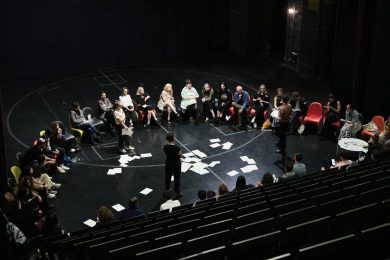
UP/ROOTING
11, 12, 13, 14, 15, 16 NOV 2025
Museo Reina Sofía and MACBA Museu d'Art Contemporani de Barcelona (MACBA) invite applications for the 2025 iteration of the School of Common Knowledge, which will take place from November 11th to 16th in Madrid and Barcelona.
The School of Common Knowledge (SCK) draws on the network, knowledge and experience of L’Internationale, a confederation of museums, art organizations and universities that strives to reimagine and practice internationalism, solidarity and communality within the cultural field. This year, the SCK program focuses on the contested and dynamic notions of rooting and uprooting in the framework of present —colonial, migrant, situated, and ecological— complexities.
Building on the legacy of the Glossary of Common Knowledge and the current European program Museum of the Commons, the SCK invites participants to reflect on the power of language to shape our understanding of art and society through a co-learning methodology. Its ambition is to be both nomadic and situated, looking at specific cultural and geopolitical situations while exploring their relations and interdependencies with the rest of the world.
In the current context fraught with war and genocide, the criminalization of migration and hyper-identitarianism, concepts such as un/belonging become unstable and in need of collective rethinking:
How can we reframe the sense and practice of belonging away from reductive nationalist paradigms or the violence of displacement? How to critically hold the entanglement of the colonial routes and the cultural roots we are part of? What do we do with the toxic legacies we inherit? And with the emancipatory genealogies and practices that we choose to align with? Can a renewed practice of belonging and coalition-making through affinity be part of a process of dis/identification? What geographies —cultural, artistic, political— do these practices of de/centering, up/rooting, un/belonging and dis/alignment designate?
Departing from these questions, the program consists of a series of visits to situated initiatives (including Museo Situado, Paisanaje and MACBA's Kitchen, to name a few), engagements with the exhibitions and projects on view (Project a Black Planet: The Art and Culture from Panafrica), a keynote lecture by Stefano Harney and Fred Moten, as well as daily reading and discussion gatherings, editorial harvest sessions, and conviviality moments.
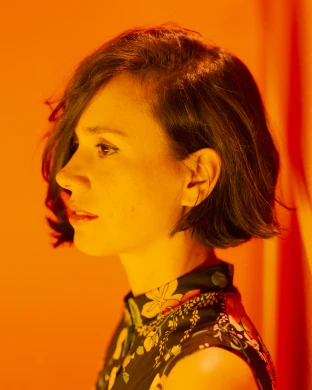
Ylia and Marta Pang
Thursday, 6 November - 8pm
The encounter between Spanish DJ and producer Ylia and visual artist Marta Pang is presented in the form of a premiere in the Museo Reina Sofía. Both artists converge from divergent trajectories to give form to a new project conceived specifically for this series, which aims to create new stage projects by setting out from the friction between artists and dialogue between disciplines.
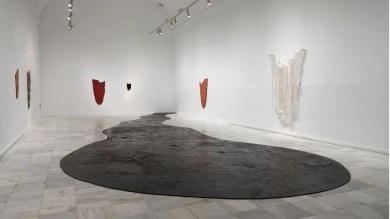
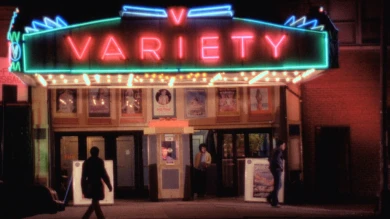
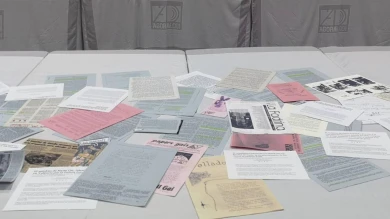
![Miguel Brieva, ilustración de la novela infantil Manuela y los Cakirukos (Reservoir Books, 2022) [izquierda] y Cibeles no conduzcas, 2023 [derecha]. Cortesía del artista](https://recursos.museoreinasofia.es/styles/small_landscape/public/Actividades/ecologias_del_deseo_utopico.jpg.webp)
![Ángel Alonso, Charbon [Carbón], 1964. Museo Reina Sofía](https://recursos.museoreinasofia.es/styles/small_landscape/public/Actividades/perspectivas_ecoambientales.jpg.webp)